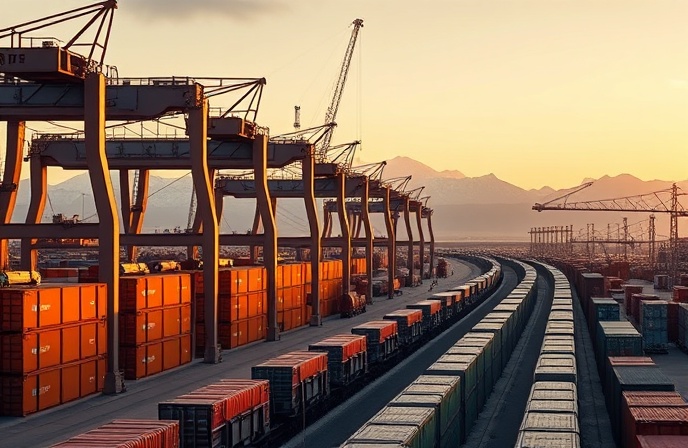Ukraine’s Railways: War, Destruction, & Global Impact

The ongoing conflict in Ukraine has profoundly impacted its railway infrastructure, a vital artery for both civilian transport and military logistics. This article delves into the consequences of these attacks, focusing on the strategic importance of Ukraine’s railway system, the devastating effects of rocket strikes on infrastructure and personnel, the broader implications for the global railway industry, and the challenges faced in maintaining operations amidst conflict. We will examine specific incidents, analyze the damage inflicted on rolling stock, track infrastructure and stations, and discuss the wider repercussions on both the Ukrainian railway network and the international railway community.
The Strategic Importance of Ukraine’s Railway Network
Ukraine’s extensive railway network plays a critical role in its economy and national security. It is a primary mode of transportation for goods, passengers, and military supplies, connecting major cities and industrial centers across the country. The network’s strategic importance is amplified during times of conflict. The efficient movement of troops, equipment, and essential supplies relies heavily on the functionality of its railways. Any disruption to this system significantly impacts the country’s ability to defend itself and support its civilian population.
Devastating Impact of Rocket Strikes on Railway Infrastructure
The repeated attacks on Ukrainian railway stations and infrastructure highlight the vulnerability of these critical assets in wartime. Rocket strikes cause widespread damage, impacting not only the physical infrastructure—tracks, signaling systems, stations, and rolling stock (locomotives, passenger and freight cars)—but also resulting in casualties among railway personnel and civilians. The destruction of rolling stock requires significant time and resources for repair or replacement, disrupting service and hindering the transportation of vital goods and people. Damage to signaling systems can lead to operational delays and safety risks, while damage to track infrastructure can cause derailments and further service interruptions.
International Repercussions and Industry Response
The attacks on Ukrainian Railways are not merely a localized issue; they have broader global ramifications for the railway industry. Several international railway operators have suspended services to and from Russia in response to the conflict, reflecting a growing awareness of the ethical and geopolitical risks associated with business operations in conflict zones. Major players such as Alstom and Hitachi have halted investments and operations in Russia, illustrating a shift in the industry’s approach to international partnerships and risk mitigation. This demonstrates a growing acknowledgment of the interconnectedness of global railway networks and the responsibility of industry stakeholders in responding to humanitarian crises. The disruption of freight services, specifically, has created significant economic ripple effects, impacting global supply chains and highlighting the dependence on stable international rail connections.
Challenges and Future Outlook for Ukrainian Railways
Rebuilding and maintaining a functional railway network amidst ongoing conflict presents immense challenges. The sheer scale of damage, the continued threat of attacks, and the scarcity of resources pose significant obstacles. Securing funding for repairs, acquiring necessary equipment and materials, and ensuring the safety of railway workers are paramount. International cooperation and support will be critical in assisting Ukrainian Railways in its recovery efforts. Investing in resilient infrastructure—such as reinforced stations and improved security measures—will also be crucial to minimize future disruptions and enhance the long-term sustainability of the railway system.
Conclusions
The attacks on Ukraine’s railway system underscore the devastating impact of conflict on critical infrastructure and civilian populations. The strategic importance of railways for both military and civilian purposes makes them prime targets in wartime, resulting in widespread damage, casualties, and significant disruptions to essential services. The consequences extend beyond Ukraine’s borders, influencing the global railway industry’s response to geopolitical risks and prompting a reassessment of international partnerships and operational strategies. The international community’s role in supporting the reconstruction and rehabilitation of Ukraine’s railway network is crucial for both humanitarian reasons and to foster economic recovery. The rebuilding process will not only require significant financial investment but also a strategic approach focused on enhancing infrastructure resilience and security. The focus should be on modernizing the railway network, implementing robust safety measures and investing in technological advancements to mitigate future risks and ensure the long-term viability of this vital transportation artery. Beyond immediate repair, investment in advanced technologies like centralized train control systems (CTC) and enhanced security measures could contribute to improved operational efficiency and resilience against future attacks. The overall recovery and modernization of Ukraine’s railways will undoubtedly serve as a case study for infrastructure resilience and international collaboration in post-conflict environments. The experience will inform best practices and provide valuable insights for other nations facing similar challenges in maintaining critical infrastructure in conflict or high-risk zones.




